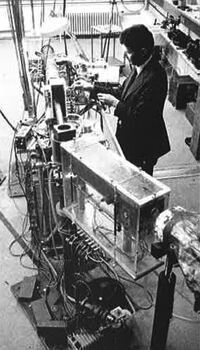

2011 - First data collections on EMBL@PETRAIII beamline.
2009 - World's first remote SAXS experiment at EMBL Hamburg.
2006 - High-Throughput Crystallisation Facility with a capacity for 10,000 trays is opened to the research community.
2002 - DESY decides to convert the next bigger storage ring, PETRA, into a dedicated synchrotron facility: PETRA III.
1992 - DESY decides to convert the DORIS storage ring into a dedicated synchrotron radiation facility.
1990 - EMBL Hamburg produces the first online imaging plate scanner for protein crystallography, which is now commercialised and widely used.
Late 1970s - Under the leadership of Heinrich Stuhrmann, the Hamburg outstation creates a boom in synchrotron radiation experiments, both by EMBL and guest scientists. New equipment and beam lines are added.
1976 - Bunker IV building on the new DORIS storage ring is completed and staff recruitment begins. DORIS is completed and becomes operational.
1975 - Agreement to set up the Hamburg outstation ─ the first EMBL outstation ─ is signed.
1969 - At a planning meeting, Ken Holmes presents his first exciting results on muscle diffraction using synchrotron radiation. Synchrotron radiation at the Deutsches Elektronensynchrotron (DESY) in Hamburg is immediately added to the planed programme for EMBL outstations.
EMBL Hamburg: Brief History, by Matthias Willmans